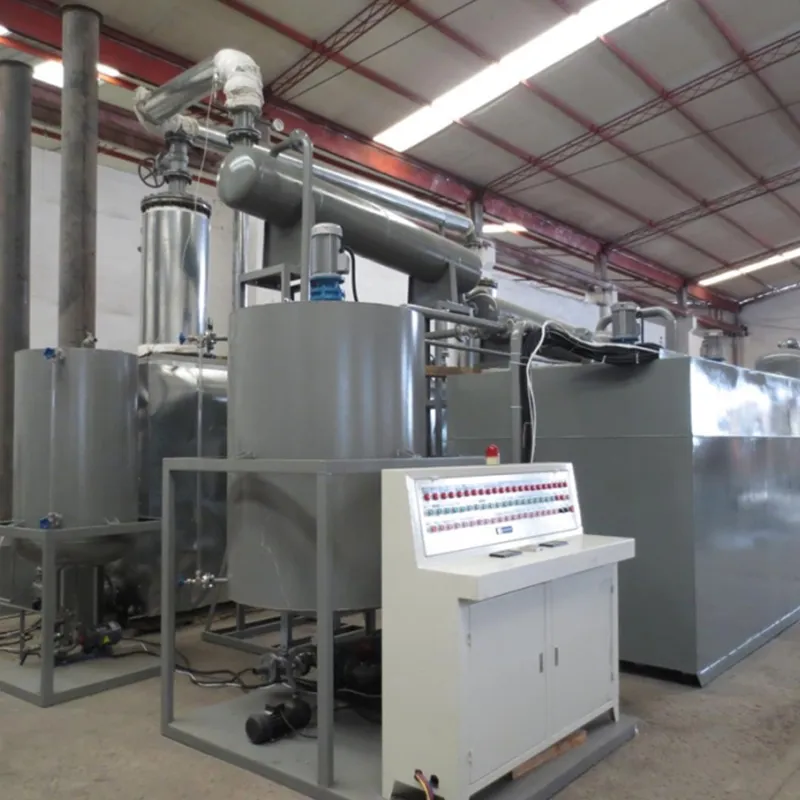A Buyer's Guide: What to Look for When Investing in a Waste Engine Oil Filtration System

You've decided to explore the significant cost and operational benefits of an on-site waste oil filtration system. It's a smart move. But with various models and technologies on the market, how do you choose the right one for your operation? Not all systems are created equal.
Here are the key factors to consider to ensure you make a wise investment that meets your fleet's specific needs.
1. Filtration Technology and Micron Rating
This is the heart of the system. You need to understand how it cleans the oil and to what standard.
Multi-Stage Filtration: Look for systems that use a combination of methods: pre-filters to remove large particles, heaters to reduce viscosity, and then fine filtration. Some advanced systems also use vacuum distillation or coalescing separation to remove water and fuel contaminants.
Micron Rating: This measures the size of particles the filter can remove. A lower number is better. For engine protection, a system that can filter down to 1 micron or less is ideal, as it removes the fine soot and particles that cause the most engine wear.
2. Capacity and Throughput
Match the system's size to your volume of waste oil.
Batch Size: How much oil can the system process in a single cycle? (e.g., 50 liters, 100 liters).
Processing Speed: How long does it take to complete one cycle? A faster throughput is crucial for larger fleets to avoid bottlenecks in the maintenance bay.
3. Level of Automation
Do you want a "set it and forget it" system or one that requires more manual operation?
Manual Systems: Require an operator to monitor the process, change filters, and transfer oil. Lower upfront cost but higher labor involvement.
Semi-Automatic/Automatic Systems: Feature programmable logic controllers (PLCs) that automate the cleaning cycle, including auto-shutoff. This improves safety, consistency, and frees up your technicians for other tasks.
4. Portability and Footprint
Consider your shop layout.
Portable Carts: These are excellent for smaller shops or those with limited space. They can be moved to where the oil change is happening.
Stationary Units: These are larger, higher-capacity systems designed for a dedicated location in your maintenance facility. They are typically suited for high-volume operations.
5. Ease of Use and Maintenance
Your technicians will use this equipment daily. It must be user-friendly.
User Interface: Is the control panel intuitive? Is it digital with clear readouts?
Filter Change Process: How easy is it to replace the filter elements? A quick-change design saves time and reduces mess.
Availability of Consumables: Ensure that replacement filters and parts are readily available and reasonably priced.
6. Safety Features
You are dealing with hot oil and electricity. Safety is non-negotiable.
Essential Features: Look for built-in thermostat controls to prevent overheating, pressure gauges and relief valves, automatic fire suppression systems (in some models), and leak-proof connections.
7. Supplier Reputation and Support
The machine is only as good as the company behind it.
Warranty: What does the warranty cover and for how long?
Technical Support: Is there accessible and knowledgeable support available if you have a question or issue?
Service and Training: Does the supplier offer installation, training for your staff, and local service support?
Your Checklist for Success:
Before you buy, ask these questions:
What is the final oil quality? Can I see a lab analysis?
What is the total cost of ownership, including filter replacements and energy consumption?
Does this system effectively remove water, fuel, and soot?
Can it handle the types of oil my fleet uses (diesel, gasoline, synthetic blends)?
By carefully evaluating these factors, you can select a waste oil filtration system that isn't just another piece of equipment, but a strategic partner in reducing costs, enhancing sustainability, and protecting your most valuable assets—your fleet's engines.
- Art
- Causes
- Crafts
- Dance
- Drinks
- Film
- Fitness
- Food
- Giochi
- Gardening
- Health
- Home
- Literature
- Musica
- Networking
- Altre informazioni
- Party
- Religion
- Shopping
- Sports
- Theater
- Wellness


